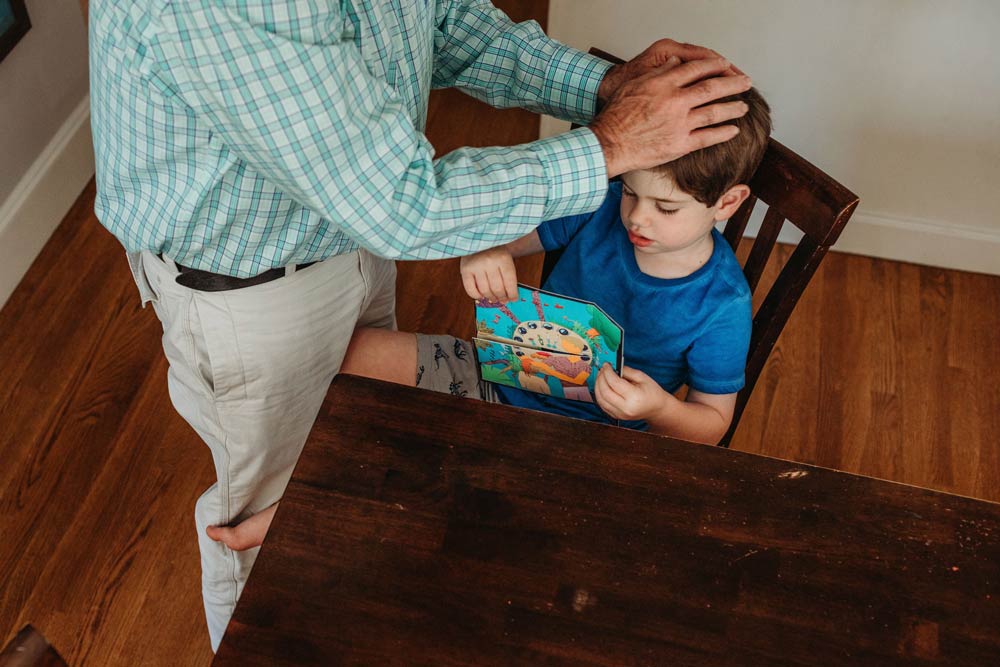
On Friday night as Shabbat begins, many parents give blessings not just over something – like candles, wine or challah – but to someone. They bless their children. This traditional practice captures the same sort of intimacy experienced in reading a PJ Library book with one’s child.
This September every child will receive a pack containing:
- a two-sided parent sheet that explains the blessing
- a perforated blessing card with both time-honoured and alternative versions of the blessings
- a special item for children, called a ‘Never Ender’ which is a series of unfolding panels illustrating the blessing of the children in an “endless” loop
Rosh Hashanah is an opportune time for families to take on a new tradition that connects a parent and child in an intimate moment each week. It is particularly special as the Hebrew blessing is the oldest blessing Jews have. The text underscores a variety of values – from passing on our legacy from generation to generation (לדור ודור – l’dor vador) to seeking peace in oneself and in one’s family (שלום- shalom). It often serves as an pathway for parents to express their own hopes for, and appreciation of, their children.
And the Never Ender? We want children to have an active role in this practice, especially those who might get restless while their parents bless them. Turning the illustrated panels is both visual and physical. It is fun and soothingly repetitive.
The beautiful illustrations were made by Jerusalem artist Eli Kaplan-Wildmann (kaplanwildmann.com) The act of blessing is centre-stage in each illustration. As children turn panels and mix and match images of families, they can appreciate how each one is unique and how a common heritage still binds us. The sequence of illustrations is intentional. We begin in the home, with the peace and beauty of Friday night. We zoom out into the community, where many families in the same community are blessing their children. We add the element of time: generations of Jewish families, throughout history and across the globe, have sustained this practice. Finally, we connect to the peace and beauty of the “first Shabbat,” with each of the six plates on the table representing a different day of Creation, as described in Bereshit, the Book of Genesis.
Let us know if your family starts to use it and how it made you all feel!
September 5, 2019